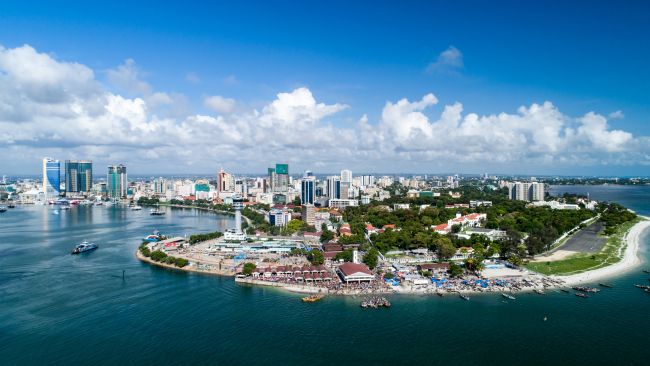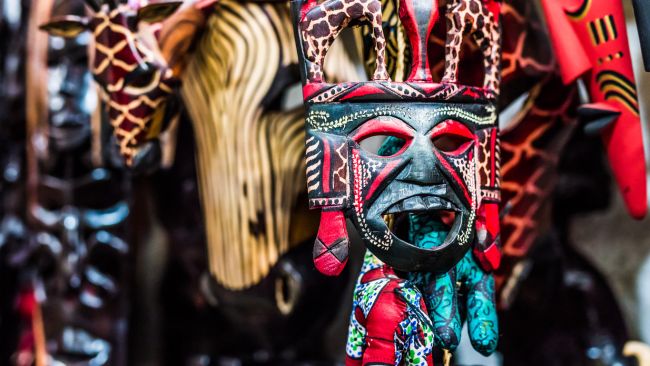Tanzania Culture, Customs, and Traditions

Tanzania represents exotic wildlife and is one of Africa’s most iconic tourist locations, much more than Safaris. Still, the country’s unique culture has made them a force to reckon with in Africa.
They were previously known as Tanganyika before merging with the Island of Zanzibar in 1964 to become the United Republic of Tanzania, a country known for its innate beauty and culture.
The country is located in East Africa. It is the largest country in the region (East Africa), a very mountainous country, and it is also home to the highest peak in Africa, Mount Kilimanjaro (5,895 meters). It is one of the most beautiful snow-capped mountains in the world, and the country is also home to some iconic islands that will be explained more in this article.
Population of Tanzania
 As the largest country in eastern Africa, the population of Tanzania is estimated to be 64,972,260 according to the latest estimations by Worldometer. The boiling pot of the nation is Dar es Salaam, with a population of 2,698,652, more populated than the country’s capital city Dodoma, which has a population of 180,541.
As the largest country in eastern Africa, the population of Tanzania is estimated to be 64,972,260 according to the latest estimations by Worldometer. The boiling pot of the nation is Dar es Salaam, with a population of 2,698,652, more populated than the country’s capital city Dodoma, which has a population of 180,541.
The indigenous people of Tanzania are divided into around 125-130 ethnic groups, all of whom are grouped majorly into four(4) families, Bantu, Cushite, Nilo-Hamite, and San.
Below are a few of the most important tribes to know in the country:
- Sukuma: the largest ethnic group in the country with a population upwards of Ten million, they speak the Sukuma language, which is the Bantu language of the Niger-Congo Family, and live majorly in the southern part of Lake Victoria.
- Nyamwezi: the second-largest tribe in Tanzania, they were made up of five ethnic groups historically, Kimbu, Konongo, Nyamwezi, Sukuma, and Sumbwa, but presently, Sukuma has separated. They speak Kinyamwezi, a Western Bantu language of the Niger-Congo family, but most people are fluent in Swahili also.
- Chagga: officially the richest tribe in Tanzania, they are the largest tribe and known as the most powerful and wealthiest in the region. They live on the southern and eastern slopes of Mt.Kilimanjaro and speak Kichagga, a Bantu language also
- Maasai: a Nilotic tribe indigenous to both Tanzania and Kenya, they are primarily herders who speak Maasai, or Maa or ɔl Maa, and their culture has a wide variety of oral literature and songs that are mostly unaltered.
Tanzania Languages
For a country with many tribes like Tanzania, it is expected that they have an extensive repertoire of languages. That guess is correct because Ethnologue has 125 languages listed as the country’s indigenous languages, but there are two main languages spoken in the country.
- Swahili: often referred to as the reason why there were no inter-tribal conflicts in Tanzania, it is the first official language of the country and is spoken by over 60% of the country’s population at home, the language belongs to the northeastern Bantu subgroup of the Niger-Congo language family.
- English: is the de facto language of the country, used in government institutions and schools. It is often referred to as the commercial language of Tanzania. It is the country’s second official language, but surprisingly, it is spoken by about 0.2% of the population as their primary language at home.
As the norm, there are hundreds of indigenous languages in the country, spoken by a large number of the people in the country, and below are the most spoken indigenous languages:
- Kisukuma: also called Sukuma, is spoken majorly by the largest tribe in the country, and about 12.8% of the country’s population speaks it as their primary language. It is a Bantu language of the Niger-Congo Family.
- Kinyamwezi: this is also a primary Bantu language spoken by the Nyamwezi people of Tanzania. There are about 1.47 million speakers of the language, similar to the Sukuma language.
These are the major languages spoken in most parts of Tanzania and would greatly benefit anyone who wants to do business in Tanzania.
Religion in Tanzania
As part of the freedom narrative, which is an excellent part of the country’s national identity, Tanzania emphasizes the freedom to practice any religion. All religious holidays receive an equal amount of relevance. These religions and the culture they come from have profoundly impacted the history of Tanzania.
The influence of Christianity came into the country majorly through the German and British colonial ruling period in the first few years of the 20th century, and the effect was more pronounced on Tanganyika.
Almost everyone on the Island of Zanzibar is Muslim, and this started as early as the 12th century when Arab traders set up trading lines along the coast and also the Islands of Pemba and Zanzibar. A considerable part of the Swahili language strongly reflects Arabian culture and Islam.
A substantial part of the country’s population is still very avid practitioners of the indigenous religions, and other religions like Hindu, Sikh, and Buddhist are also present.
Family Life of Tanzanians
Like the norm in every African country, gender roles are obvious, and the impact of the family on society is very noticeable and essential. For Tanzanians, family is a very important aspect of society.
Tanzania’s basic family structure is extended, similar to many African countries. Still, in recent years, the pressure and responsibility of family development are gradually shifting to the nuclear family as the country develops more and more.
Public show of affection isn’t typical in the country, and in some ethnic groups, puberty ceremonies for boys and girls are practiced.
Arts and Architecture in Tanzania
 Arts, Culture, and People are all a vital part of the national identity of Tanzania. It is the primary reason the country is a tourist hotspot in Africa; from the Makonde ebony carvers down to the district dance and music forms unique to every ethnic group, it is very obvious that the accolades are not unfounded.
Arts, Culture, and People are all a vital part of the national identity of Tanzania. It is the primary reason the country is a tourist hotspot in Africa; from the Makonde ebony carvers down to the district dance and music forms unique to every ethnic group, it is very obvious that the accolades are not unfounded.
Oral storytelling has been an essential part of Tanzanian arts. Even moving from that, Makonde carvers from the country’s southern parts have gained quite the repute for being extremely efficient with their work. The elaborately carved doors in Zanzibar have always been a stunner. However, the interest in that has been waning due to the rekindled interest of people in the Island’s beautiful beaches.
The influence of different cultural customs and sounds is very evident in the traditional music and history of Tanzania, from the Cuban elements which were very prominent in the early 19th century, to the 1960s Congolese-inspired influence was also widespread, and mchiriku, a techno-style sound influenced by traditional rhythms, is also common.
Architecture
The Architectural style and patterns of buildings in Tanzania draw much inspiration from the Arabian culture and style and the German and British colonial rule implemented in the country for the better part of the 19th Century.
The suburban housing pattern followed a grid. These houses are called Swahili houses, simply rectangular structures made of either stone or clay, with a corrugated roof on the former and a wooden frame and a thatched roof on the latter.
The building style of each ethnic group differs widely depending on their location in the country. Still, they all subtly reflect Arabian, German, and British influences.
The de facto capital of the country, Dar es Salaam, is the leading commercial center, and it has a lot of ruins and buildings that reflect this effects to the maximum, like the Askari, or “soldier,” which was unveiled in 1927 and commemorated the loss of African troops during World War I.
Tanzanian Food
The diversified cuisine of Tanzania is influenced by many different traditions and cultures, such as African, Indian, Arabic, and European. You can discover the following typical foods in Tanzania:
- Ugali: a staple cuisine typically eaten with stews or vegetables prepared from cornmeal or cassava flour.
- Chipsi Mayai: like most traditional dishes of Tanzania, the beauty of this dish is in its simplicity. It means chips and eggs in Swahili and is similar to French fries.
- Pilau: a flavorful rice meal frequently eaten with meat or vegetables and cooked with cumin, cinnamon, and cardamom.
- Chapati: a sort of flatbread comparable to Indian naan or roti that is prepared from wheat flour.
- Zanzibar Mix: this is a well-known street snack in Zanzibar that combines deep-fried potato chips, cassava chips, samosas, and bhajis (vegetable fritters).
- Vitumbua is a coastal eastern African dish similar to Indian dosa or crepes. Vitumbua is a sweet, coconut-flavored appetizer with rice flour, coconut milk, and sugar.
Tanzanian Fashion
With more than 100 ethnic groups, clothing traditions, garments, and decorations vary widely. Still, a common theme in all dresses available is modesty, bold colors, and a superb representation of each minority or majority group.
The traditional male clothing in Tanzania is the Kanzu, a white or beige-colored robe made originally from silk but now from polyester and other synthetic fabrics. A suit, a traditional cloak called the Bisht, and a traditional cap are worn alongside the Kanzu for formal events.
For women, there are multiple traditional outfits, chief of which is the Kanga, a rectangular cotton cloth, produced majorly in Tanzania; it is an honored tradition used by the women as a method to express their thoughts, beliefs, opinions, and there are often patterns and words printed on the fabric.
Tanzania Holidays and Celebrations
Tanzania has a substantial variety of festivals and celebrations all year round since it is a diversified nation with a rich traditional background. Below are a few of Tanzania’s most significant festivals and holidays.
- Zanzibar Revolution Day – January 12th.
- Union Day – April 26th.
- Labor Day – May 1st
- Eid al-Fitr
- Farmers’ Day- August 8th
- Persian New Year (Mwaka Kogwa): celebrated the third week of July in Zanzibar
The government gives every religious holiday and celebration equal recognition.
Doing Business in Tanzania
Being one of the foremost Sub-saharan African countries in terms of innovation and also a stunning tourist location, the possibilities of succeeding in doing business in this country are very high, and investors are tapping into that quickly. Here are a few things to note while doing business in Tanzania.
- The two most significant pieces of legislation that govern investment and company registration in Tanzania are the Tanzania Investment Act of 1997 and the Companies Act of 2002.
- Corporate Culture: high value is placed on establishing personal connections and trust before doing business. To thrive in Tanzania, it’s critical to establish trusting connections with local stakeholders and partners.
- Registration with the Business Registrations and Licensing Agency (BRELA) is essential for every business before it can start operating.
- Register with the Tanzania Revenue Authority (TRA), the National Social Security Fund (NSSF), or other social security bodies, which is dependent on the type of business and the industry.
- Advertising: Using videos, audio, or images for advertisement depends on your target audience. If your target audience is the youth, you can work with influencers, musicians, and other artists who have a large following and influence on the youth to showcase your product.
Common Tanzania Language Expressions and their Translation
Although there are multiple dialects spoken by the different tribes and ethnic groups in the country, Swahili is often referred to as the national language, so it is a great language to communicate with everybody, below are a few common expressions and their translation.
- Hello – Jambo
- Goodbye – Kwa heri
- Please – Tafadhali
- Thank you – Asante
- Thank you very much – Asante Sana
- There are no problems – Hakuna Matata
- My name is – Ninaitwa …
- Yes – Ndiyo
- No – Hapana
- No thanks – Hapana Asante
- How are you? – Habari Gani?
- I’m fine – Mzuri
- (Not) Good – (Si) nzuri
Translating for the Tanzanian Market
Although the official language of Tanzania is English, Swahili is the most spoken primary language in the country, and it is spoken by approximately 60.2% of the population as the primary language in their homes.
But English is used officially, and finding fluent speakers in the country isn’t tough. A large number of the citizens of the country also understand English, especially among the younger generations who are more educated by their predecessors.
As a business or brand seeking to operate in Tanzania, you must adapt your product and message to Tanzanian audiences. Your brand’s message or product must be translated into Swahili or English to attract all categories of customers and age brackets.
Conclusion
Most business failures arise due to a need for more understanding of the new market. Understanding Tanzania’s climate, culture, language, customs, demographics, etc., as shown in this article, will help businesses that seek to venture into the Tanzanian market penetrate the market quickly. If you want to invest in the Tanzanian market, a few things to consider are your audience, age, social class, and, most importantly, their primary language of communication.
References:
